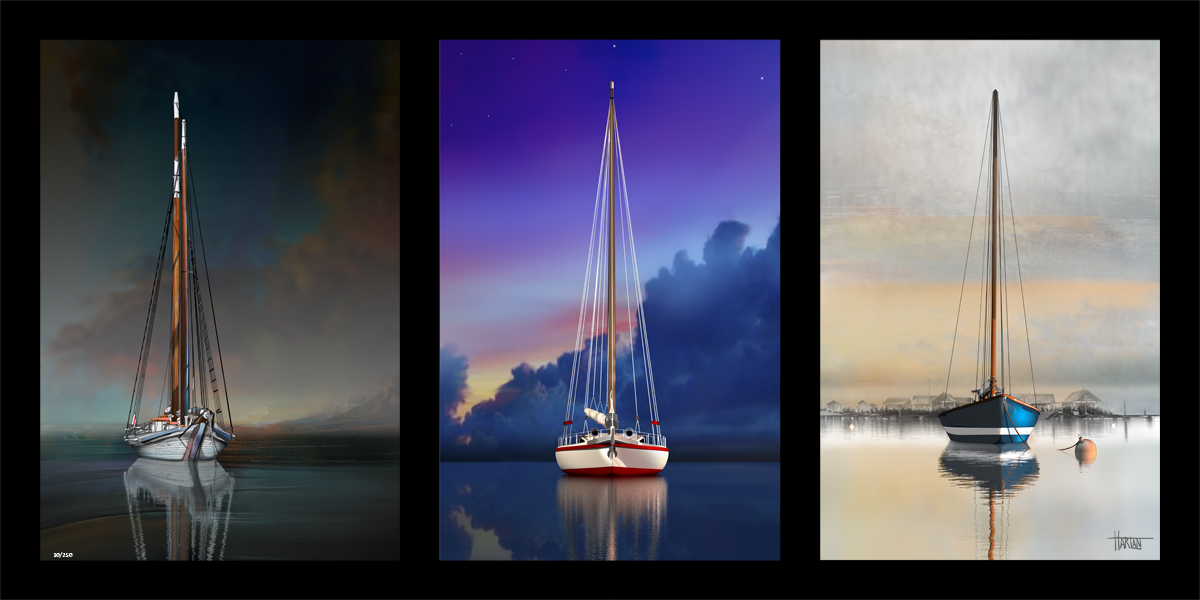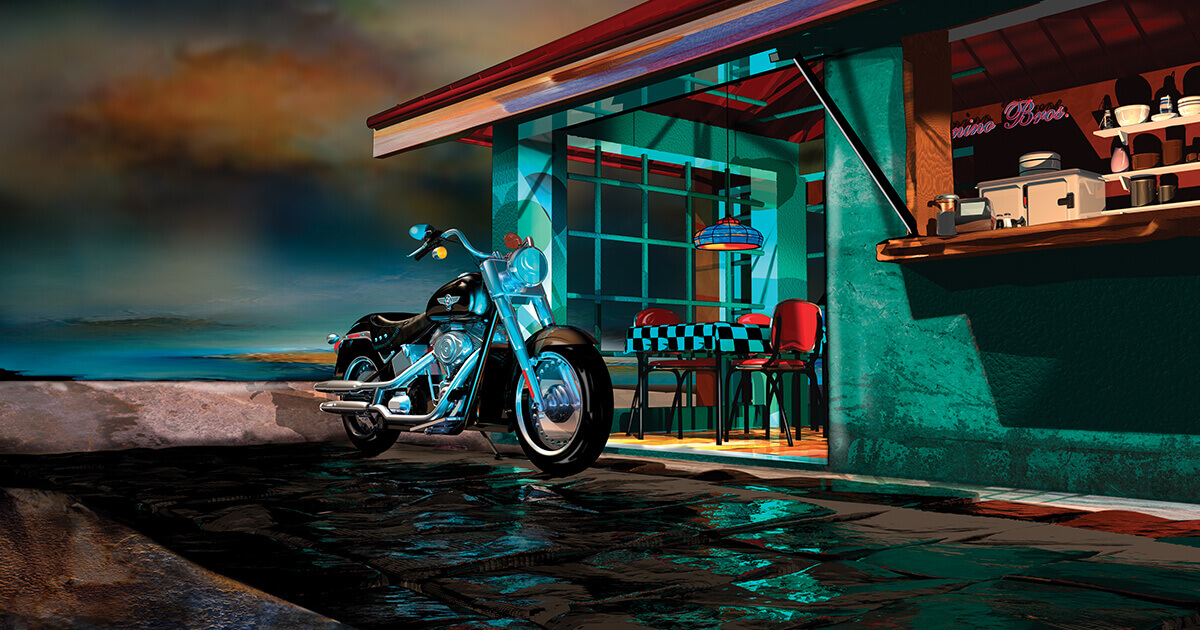You may purchase a book, tiles or 12″x16″ paper prints easily online. To purchase large canvas or aluminum work please visit the locations section of our website for a list of galleries that represent Harlan Fine Art.
Stephen Harlan talks about his creative process …
Q. Would you characterize your process as “unique”?
SJH: The process I use to create my artwork is quite unique when you think in terms of traditional painting.
I create all of my artwork digitally, using a very powerful computer that is customized with special tools and software to create such complicated pieces.
There are different ways that I can approach a painting. If I have a specific idea of what I want to depict, I start with a simple pencil sketch. If I don’t have an idea of what I want, I simply start with a blank screen.
I use a combination of software tools to achieve the various visual effects, depending on the mood of the piece.
Q. Can you describe the process in more detail?
 SJH: The first step in the process of developing a painting is a simple pencil sketch. This is very primitive, but sets the tone for the basic layout and perspective.
SJH: The first step in the process of developing a painting is a simple pencil sketch. This is very primitive, but sets the tone for the basic layout and perspective.
My artwork is hyper photo-realistic in terms of perspective, detail, color, shadows and light. There are times when I look at a finished piece and don’t even remember some of the extremely detailed features and reflections!
When I paint, I expand a very small portion of the screen to a very small area and then zoom back out to a full frame. For example, in the detail of a flower, one petal of the flower will take up a 21 inch monitor screen. By doing this, I can paint the finest detail, down to a drop of water on a leaf.
Q. It sounds as if you have a clear vision for your finished painting, from the beginning.
SJH: In my paintings, all scenes are fictional and spring from my imagination. My inspiration and motivation stems from wanting to create a general feeling of ‘I want to be in that place.’
Even though I have a general idea of the mood I wish to capture, I never really know what a finished painting will look like until I actually print out a large proof.
Q. Can you describe the actual painting process?
SJH: The painting is done using electronic brushes that I have created. The brushes are dependent upon the look I want to achieve; I can depict oils, acrylics, watercolors and pastels.
The screen is designated as “wet” paint when I start. I can move around, scrape it off or start over. After finishing a session, I “dry” it. Each time I work on the piece, this process is repeated.
Q. How long does it take to create a new work of art?
SJH: The amount of time spent creating a piece depends on the amount of detail I want to achieve. Some pieces will take as little as one week while others may take months.
The detailing process can be infinite with elements continually added, so sometimes it’s difficult to “know” when a piece is finished. Yet it seems there’s always that point when I feel it’s complete.
Learn more about the Giclée printing technique that we use to transform our digital artwork into high quality reproductions for your home.




